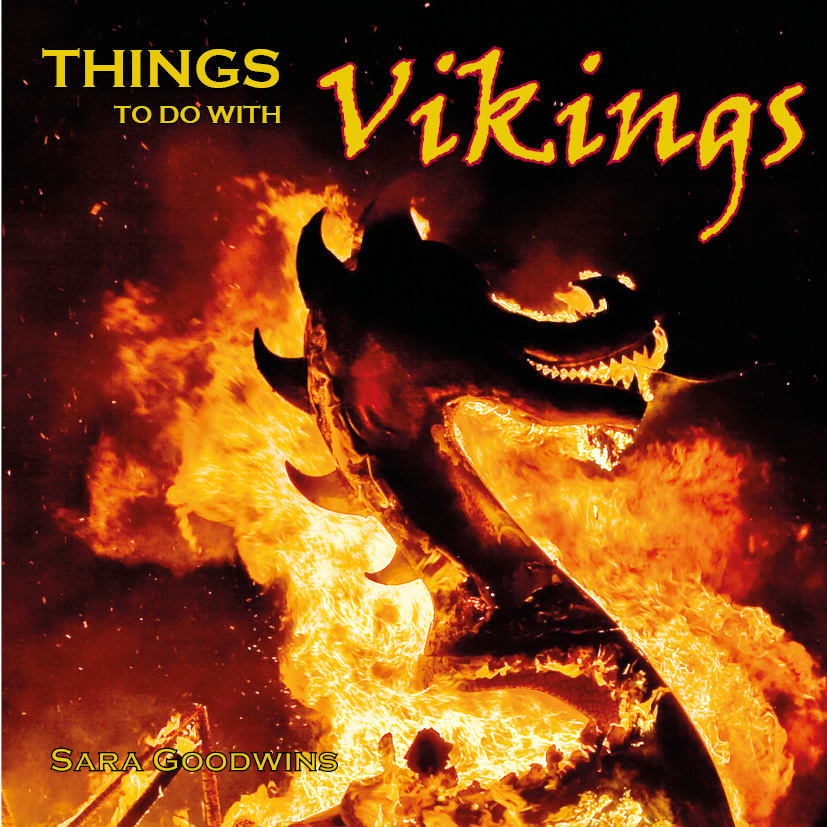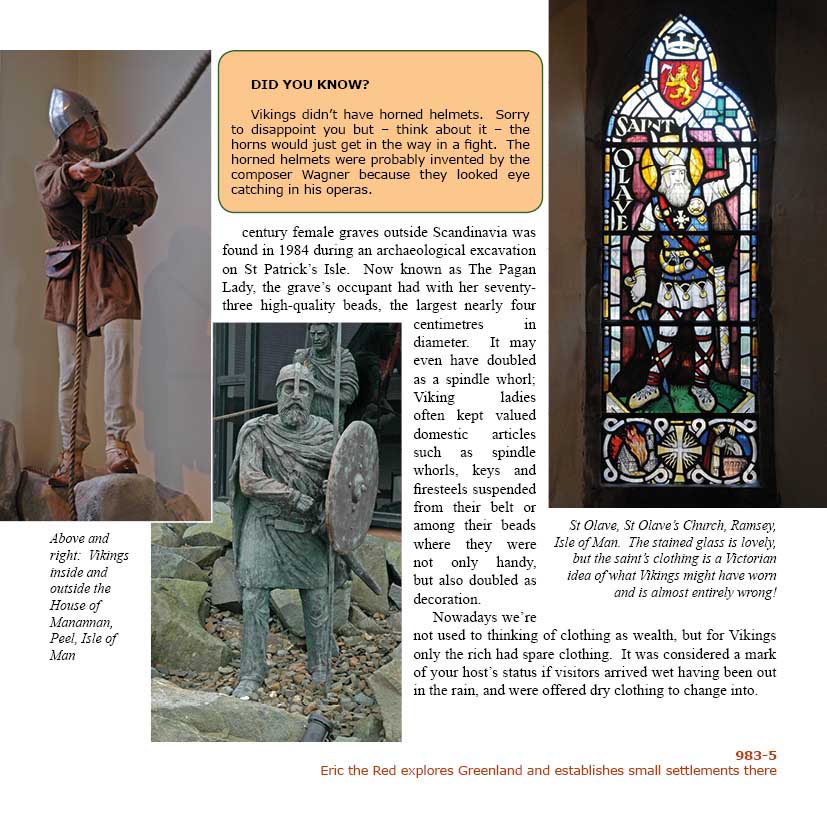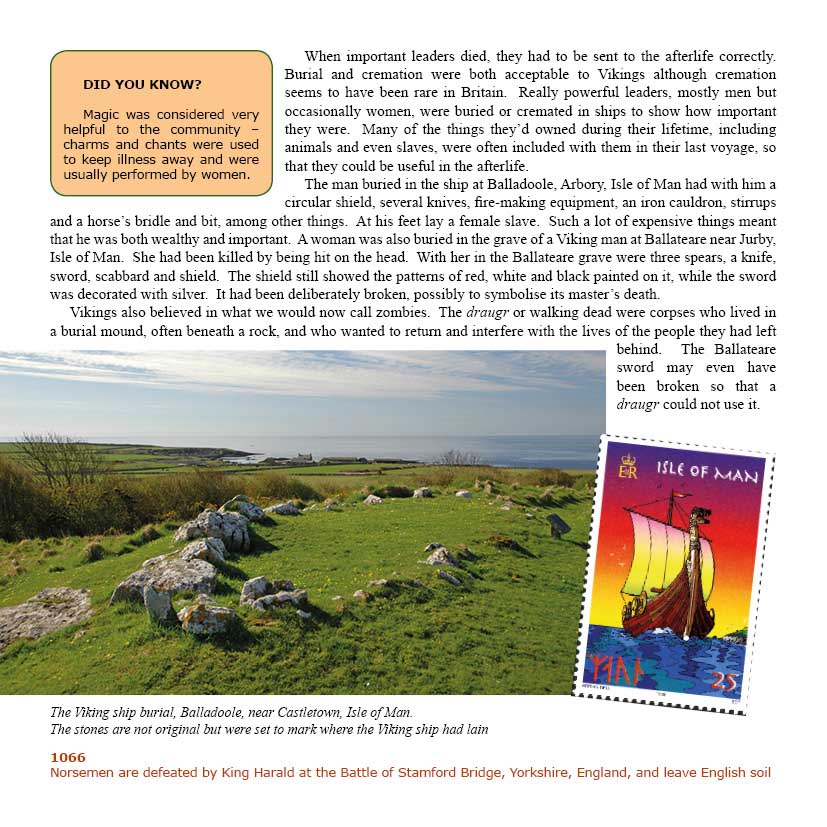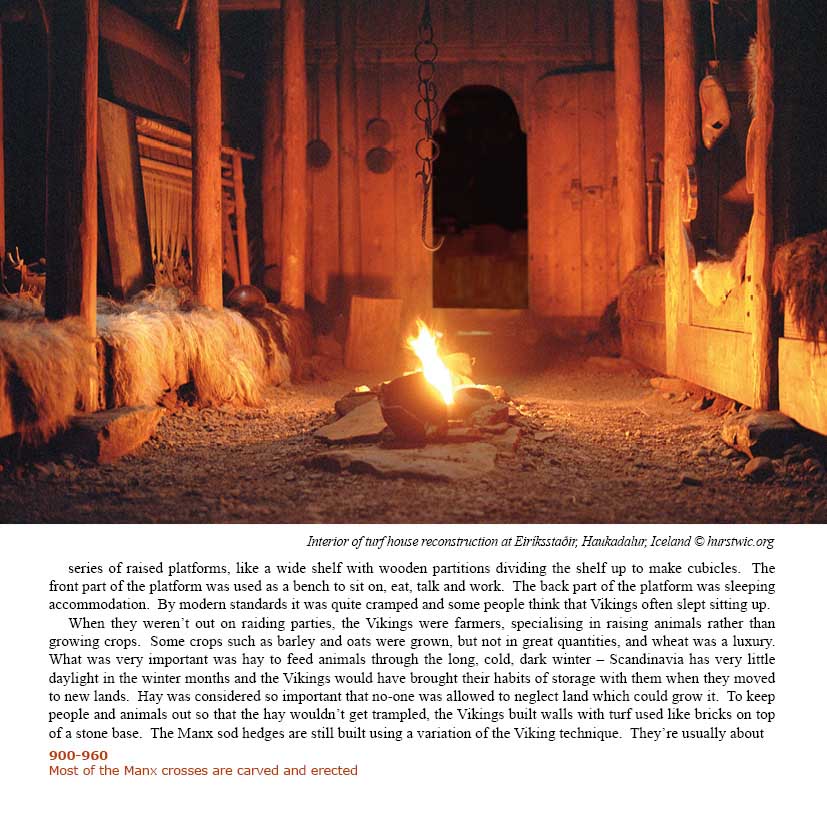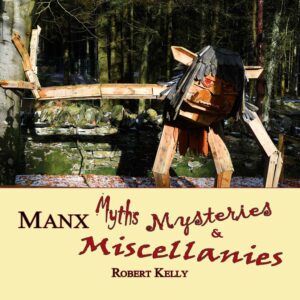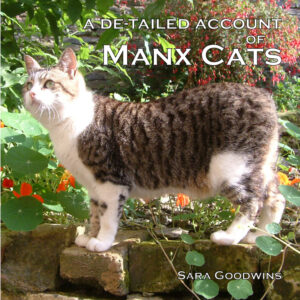Things to do with Vikings
£5.95
Written by Sara Goodwins
A brief social and cultural history of the Vikings explaining how they lived. Includes Viking activities to try.
“Raiding or invading leaves little time for fancy cookery and one of the main ‘packed lunches’ for Vikings was dried cod… To use just add water. It’s like a Viking Pot Noodle!”
Things to do with Vikings, page 19
Ruthless barbarians, romantic seafarers or enlightened parliamentarians, Vikings continue to be fascinating and often terrifying figures in British history.
The Isle of Man is proud of its Viking heritage. The island's parliament was founded by Viking settlers and is the oldest continuous parliament in the world. Replica Viking longboats are still moored in Peel harbour and a longboat race held there every July. And every Manx schoolchild is taught about how the Vikings came to their island and how they lived once they got here.
But the book is not just aimed at the Manx. Iceland is where many of the great Viking sagas were written. The first Viking raids in Europe were made on the north-east coast of England. Shetland is home to the great Viking fire festival Up Helly Aa, as well as archaeological remains and a reconstructed longhouse. Illustrations and examples are drawn from across the Viking world. Things to do with Vikings is aimed at anyone who wants to know what Vikings were like as people. As well as how they organised their laws, this book explains how Vikings built their houses, what they ate, the games they played and how they found their way across vast oceans. It also suggests how their talents and organisation stretch across the centuries and influence us today.
The book also provides hands-on activities which readers can try to experience how Vikings did things. Have a go at Viking navigation or Viking knitting or make Viking feast bread. Grettir's Saga, written by Vikings about their culture says he knows most who has tried most. This book helps readers try.
‘Things? What things?’
In English calling something a 'thing' is rather vague. Doing things is an unspecified activity, sometimes fun and often on the spur of the moment. There are quite a lot of things to do like that in this book.
For Vikings, on the other hand, a 'thing' wasn't vague at all. It was what they called their parliament.
Today most parliaments meet in some sort of designated building often called the House(s) of Parliament and are usually full-time affairs.
Vikings approved of law, at least when it was their own, but didn't think new laws should take very long to decide, so their 'things' only met a few times a year for a few days at a time. They also didn't have a big enough building to get in all the tribal representatives, so the Viking legislative assembly met in a designated field, called, unsurprisingly, the 'Thing Field' or thing-völlr. The 'House of Thing' might indeed have sounded odd.
The serious but boring part of making laws for the next year or so was got over in a few days before the Vikings went back to the much more important task of partying. Perhaps modern parliaments should take note...
Copyright 2015 Loaghtan Books. All rights reserved.
